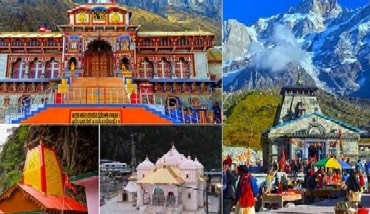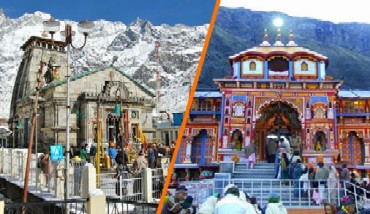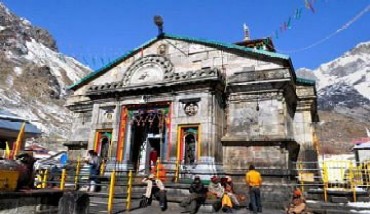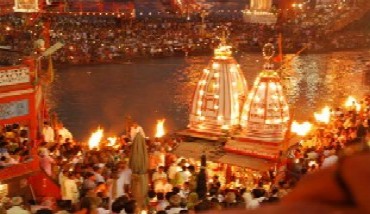-
Phone +91-9891275505
-
E-mail sales@eepltours.com
- Tour Enquiry !!!
Uttarakhand Pilgrimage Places
- Home
- Uttarakhand Pilgrimage Places
- Badrinath
BADRINATH YATRA FROM DELHI
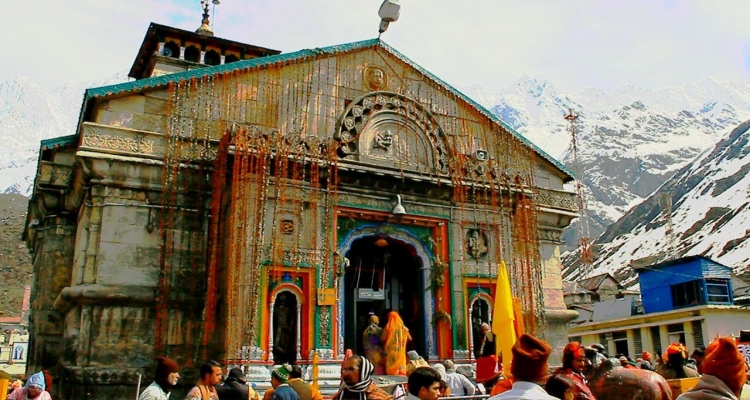
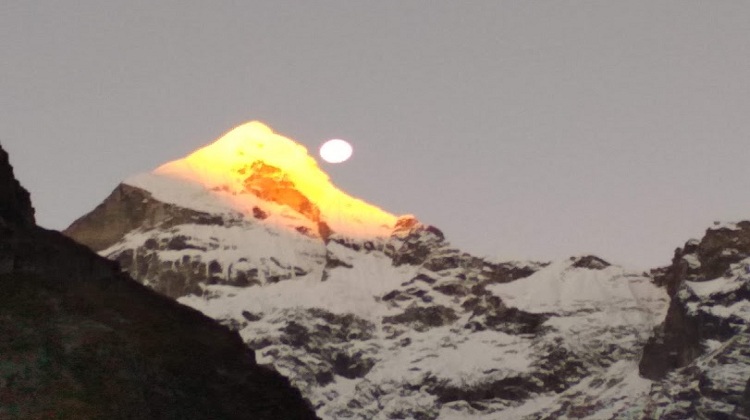
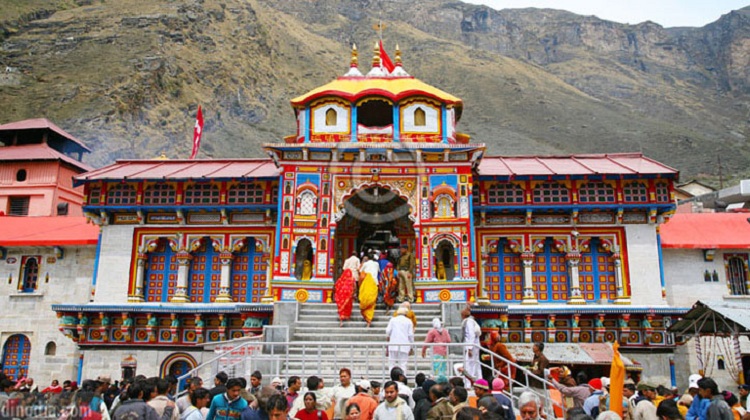
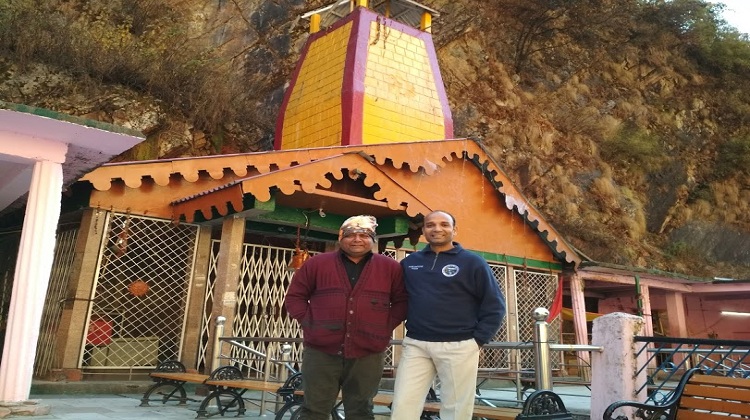
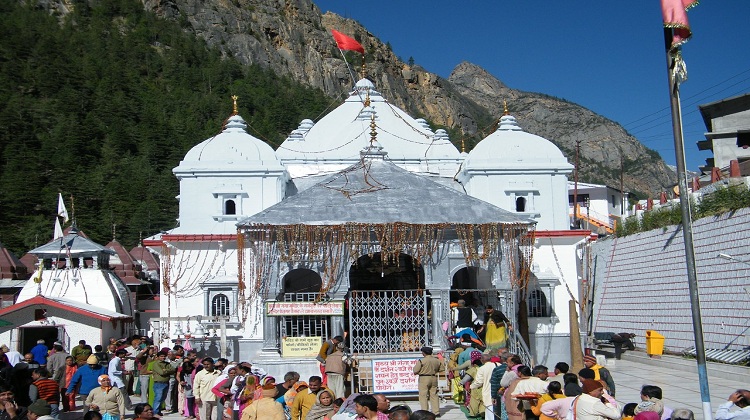





BADRINATH
State: UttarakhandDistrict: Chamoli
Altitude: 3415 m
Sandwiched between Nar and Narayan mountain ranges, Badrinath in the Chamoli district of Uttarakhand is one among the most sought after pilgrim centers in the Indian subcontinent. Badrinath is beautifully set in the backdrop of the colossal Neelkanth mountain peak and never fails to make the visitor spellbound with its unparalleled gorgeousness.. The term Badrinath is a derivative of badri, which means the place where beries grow abundantly. A place, which holds so many myths and legends, Badrinath acquires predominance in the travel itinerary of a pilgrim. The popular belief is that Badarinath was the domain of Lord Shiva, and Lord Vishnu managed to unseat Shiva from here to Kedarnath. Another belief is that when Ganga made her descend to earth she split up in to twelve streams and one among the channels, Alakananda felt on Kedarnath which gives Badrinath it’s majestic look. It is not just recreational activities, shrines and pilgrimage that Badrinath offers. It proffers the awesome beauty of the snow clad mountain peaks and the surging landscapes of the Garhwal region
HOW TO REACH
By Flight
Jolly Grant Airport is the nearest Airport to Badrinath situated at a distance of 314kms. Jolly Grant Airport is well connected to Delhi with daily flights. Badrinath is well connected by motorable roads with Jolly Grant Airport. Taxis are available from Jolly Grant Airport to Badrinath.
By Train
The nearest railway station to Badrinath is Rishikesh. Rishikesh railway station is situated 295kms before Badrinath on NH58. Rishikesh is well connected by railway networks with major destinations of India. Trains to Rishikesh are frequent. Badrinath is well connected by motorable roads with Rishikesh. Taxis and buses are available from Rishikesh, Srinagar, Rudraprayag, Chamoli, Joshimath and many other destinations to Badrinath.
By Road
Badrinath is well connected by motorable roads with major destinations of Uttarakhand state. Buses to Haridwar, Rishikesh and Srinagar are available from ISBT Kashmiri Gate. Buses and Taxis to Badrinath are easily available from major destinations of Uttarakhand state like Dehradun, Haridwar, Rishikesh, Pauri, Rudraprayag, Karnaprayag, Ukhimath, Srinagar, Chamoli etc. Badrinath is connected with Ghaziabad by National Highway 58.
NEAR BY LOCATION
Badrinath Temple:
Badrinath is the most sacred Dham of India. It is located at an elevation of 3,133mts above sea level in the Chamoli district of Uttarakhand state. This Dham was established by Adi Shankaracharya in the 9th century. The deity of Badrinath temple is Lord Vishnu. The temple is situated on the right bank of the holy Alaknanda River.
TaptKund:
Tapt Kund is a natural thermal spring where the devotees take a holy dip as it is very important to take a bath before visiting a temple. It is also believed that the kund has medicinal values and can cure allergies of the people. All the devotees take holy dip in the natural hot water together with unknown people. The people may be unknown to each other but their purpose of visit is same, i.e. to worship in the sacred Badrinath Dham.
Brahma Kapal is a place where Hindus performs propitiating rites for their deceased ancestors. Brahma Kapal is a flat platform on the bank of river Alaknanda. You can see several pundits sitting with ‘pooja samagri’.
Neelkanth:
Situated above the Badrinath Temple, Neelkanth peak is named after Lord Shiva. The cliff of the peak is the first place where the sun castes its crimson rays. Neelkanth is a Pyramidal-shaped snowy peak and if you carefully observe its cliff then you can see as if Lord Shiva is sitting looking at the sky.
Mata Murti Temple:
Situated 3kms from Badrinath, Mata Murti Temple is dedicated to the mother of Lord Narayan. According to mythology Mata Murti prayed Lord Vishnu to take his next avatar by coming out from her womb. Lord Vishnu then happily agreed and came into world as twins, Nar and Narayan to kill a monster. Every year a fair is held in the month of August at Mata Murti Temple
Charanpaduka:
Situated 3km above Badrinath Temple lies a beautiful meadow carpeted with wild flowers in the summers. A boulder bearing the footprints of Lord Vishnu is located here known as Charanpaduka. It is said that when Lord Vishnu descended from Vaikunth he stepped on this boulder. The area is a steep climb from the town and is full of caves & boulders.
Narad Kund:
Located near Tapt Kund, this kund is believed to be the recovery source of the Badarinath idol. The hot water springs comes out from beneath the Garur Shila and falls into a tank. Darshan of Badarinath is always preceded by a holy dip in this kund. Apart from that there are many other hot water springs. Devotees take a dip in them for their religious and medicinal value.
Mana:
Mana is very close to Tibet border and it is one of the last villages of India. Most of the tourists who visit Badrinath also come to see the end of the road at Mana. Mana is inhabited by Indo-Mongolian tribes often called as bhotias. Mana is situated 3kms from Badrinath.
Bheem Pul:
Bheem Pul is an enthralling and adventurous place with mythological importance. This is the place where Bheem threw a big massif rock to make a path joining two mountains so that Draupadi could walk easily on it. Saraswati River is coming from between the mountain with immense force to merge with the water of Alanknanda River.
Sheshnetre:
On the opposite bank of the river Alaknanda, in the lap of Nar Parvat, there are two small seasonal lakes. Between these lakes is a boulder having an impression of the legendary snake, Sheshnag. The formation of eye on the boulder is natural.
Panch Dharas & Panch Shilas:
The Panch Dharas (five streams) which are famous in Badaripuri are Prahlad, Kurma, Bhrigu, Urvashi & Indira dhara. The most striking of these is the Indira dhara, about 1.5 km north of the town Badaripuri. Around the Tapt Kund there are five blocks of mythological importance called Narad, Narsimh, Barah, Garur & Markandeya Shilas (stone)
11 Nights / 12 Days
07 Nights / 08 Days
05 Nights / 06 Days
02 Nights / 03 Days

